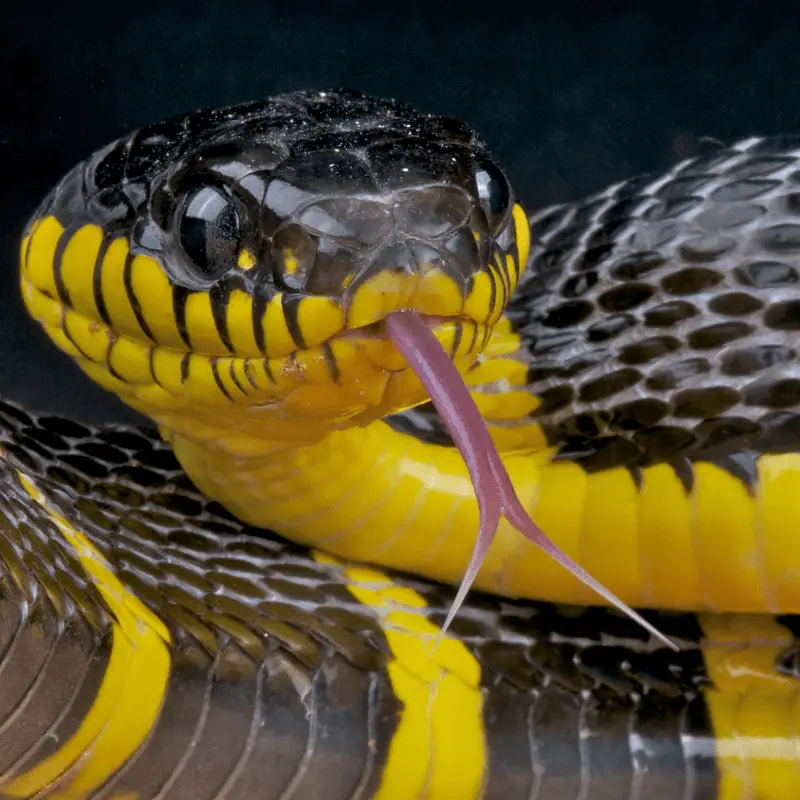If you do a bit of research, you will find out that snakes are famous for eating bizarre things. Researchers have found elements, like light bulbs, golf balls, alligators, and pregnant sheep, in the snakes’ stomachs. Keeping this reputation in mind, it makes sense to question the feeding habits of the snakes. Let’s start with the basics. Are snakes Carnivores?
Yes, all snakes are carnivorous. The diet of a snake depends on the species, size, and habitat. Primarily, snakes feed on eggs, fish, mice, frogs, insects, and other lizards. The larger snakes may like to catch and eat bigger prey. A big meal keeps the snakes full for a long time. Like pythons and anacondas, these snakes can live up to a year without food after consuming large prey.
How do snakes eat?
Even though snakes eat other animals, they do not possess the right kind of teeth to chew on their food. That’s why snakes tend to catch their prey whole. The jaw structure is so unique that it allows its mouth to open wider than its body shape. This feature helps the snakes to swallow their prey whole. Thanks to this unique feature, a snake can consume 3-4 times bigger prey than themselves.
Once swallowed, the hook-shaped teeth and the muscles push the prey towards their stomach. The snakes then take a long time to digest the food. The digestion period depends on the weather condition. The warmer the body of a snake, the faster it will digest its food. However, it takes about three to five days for a snake to digest its food completely. The largest snakes, like the Anaconda of South America or the Python, consume big prey. So, their digestion process can take weeks to complete.
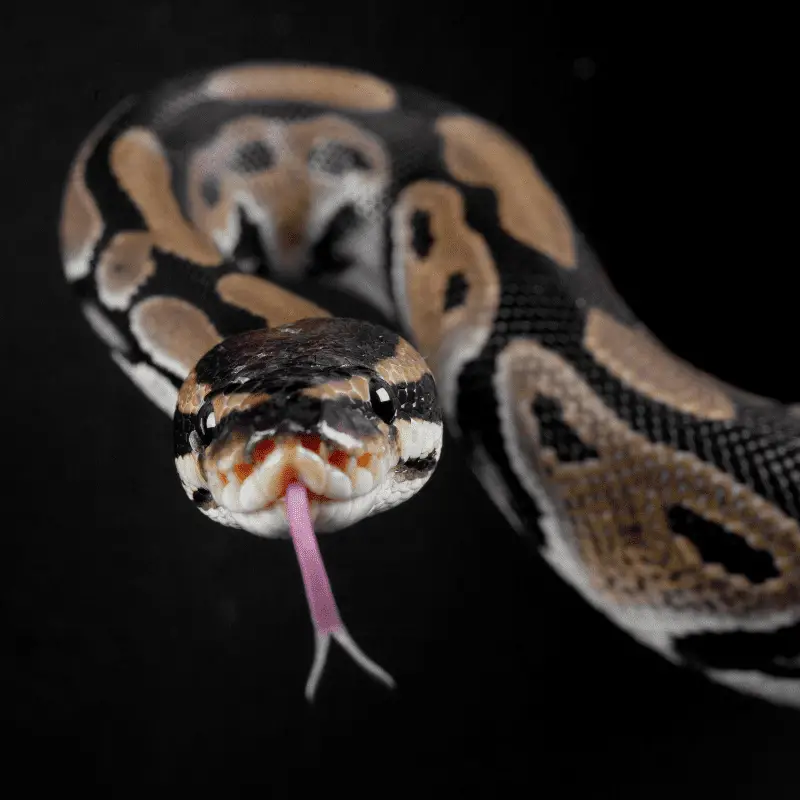
Python 
Anaconda
While the non-venomous snakes use the construction method to kill their prey, the venomous ones inject poison to subdue their prey. This injection of toxin starts their digestive process even before the snake has swallowed it. Even though most snakes hunt other animals to feed, some snakes, like the king cobra snake, consume venomous snakes, like Rattlesnake.
Behaviour After Eating
After eating, all snakes become inactive. During this period of inactivity, they use all their energy to digest their food. Digestion, for the snakes, is an intensive activity, especially if the snake has consumed a large prey. In species that feed regularly, the entire intestine goes into a reduced state to save energy. The same thing happens for the snakes. Once they consume their prey, their digestive system gets updated to total capacity within the next 48 hours. Snakes require so much metabolic energy while digesting their food that, for some species, their body temperature increases significantly.
For example, the body temperature of the Mexican Rattlesnake can spike to as much as 14 degrees more than the surrounding environment while the snake is digesting its food. That is one reason why if a snake gets disturbed during its digestive process, it often regurgitates its prey. This process helps the snake to find a Hiding Place or escape the confrontation.

However, when left undisturbed, the digestive system of the snakes shows a highly efficient result. The snakes can dissolve and absorb almost every part of their prey except their claws and hair. They excrete these portions along with their regular uric acid waste.
Even though it is rare, snakes are also known for occasionally dying from trying to swallow too big of an animal. Even though the digestive fluid of the snake is exceptionally efficient for digesting animals, it cannot digest the plant matter. Even if you feed a snake plant matter, it often passes through the digestive tracts without any changes.
What does a baby snake eat?
Baby snakes are very much like their parents but they often eat smaller animals. Most of the time, baby snake food consists of insects, eggs, mice and frogs which need to be small enough for them to swallow whole.
- Insects
- Eggs
- Mice
- Frogs
- Small animals
Do snakes drink water?
Yes, snakes do drink water. But the catch is: they don’t drink as often as other animals! However, they like to soak themselves in water, especially during the time of shedding. If you are keeping a pet snake, make sure to keep a shallow bowl of water inside your pet’s tank.
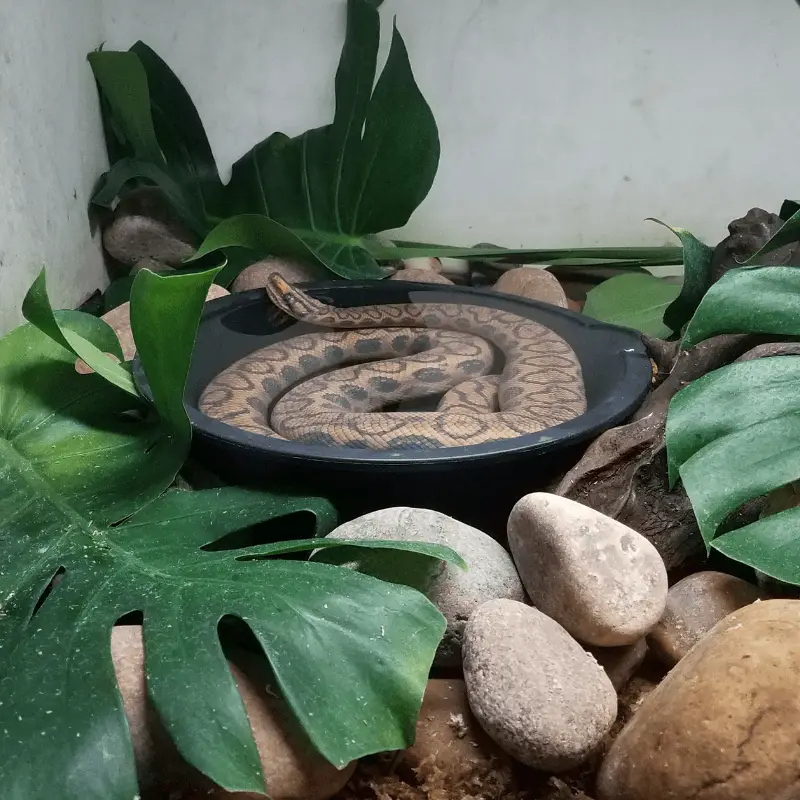
Hunting Methods
The snakes do not have claws, speed, or other characteristics that help other animals catch their prey; they mostly rely on stealth. Snakes tend to ambush their prey.
As these animals need external heat to keep their bodies warm and run their physical functions, they are slower in general. Most of the time, snakes stay inactive during the day.
This conserved energy helps the snakes to go for quick strikes against their prey. While hunting, snakes will camouflage in the area where they expect their prey to pass. The snakes strike once the prey comes in the striking distance.
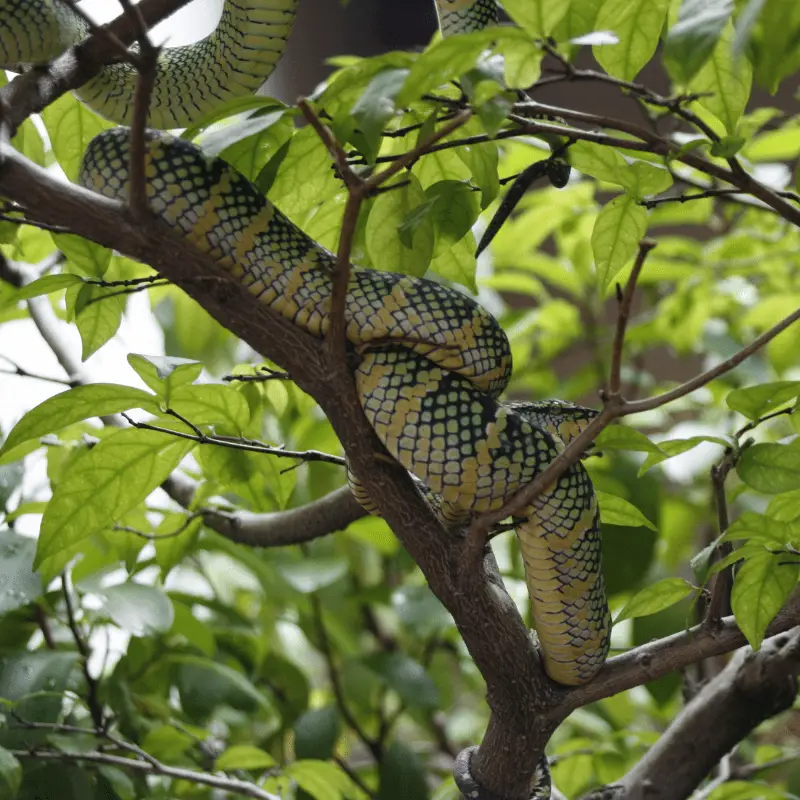
Some of the tree snakes also prefer to jump or drop on their prey from a tree branch. Some of these arboreal snakes anchor themselves to a branch and pull their prey onto the tree to eat it. The juvenile snakes of some species used their brightly coloured tail ends to attract prey. However, this behaviour is not seen in adult snakes. Some snakes forage. These snakes move more regularly and actively around their territory in search of vulnerable and young prey.
Even though it is not an energy-efficient way to hunt, it is a procedure that the smallest snakes use. The foraging process also works better if the target moves slowly or remains in a single place. Any snake can switch between these technics depending on their available food and the season.
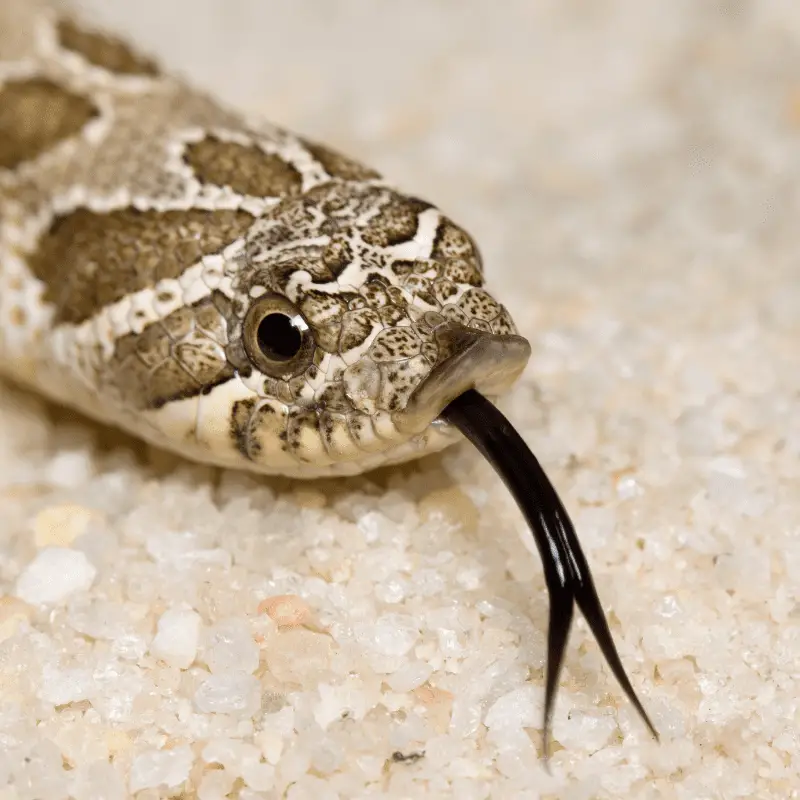
Even though snakes are equipped with multiple sensors to search and hunt their prey, they mostly rely on the chemical information they collect using their tongue. While some snakes like to forage, most snakes use the Ambush method. After catching its prey, a venomous snake injects venom while a non-venomous snake uses the constriction method to subdue their meal.

